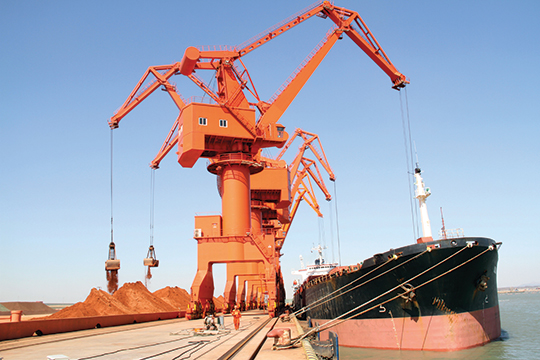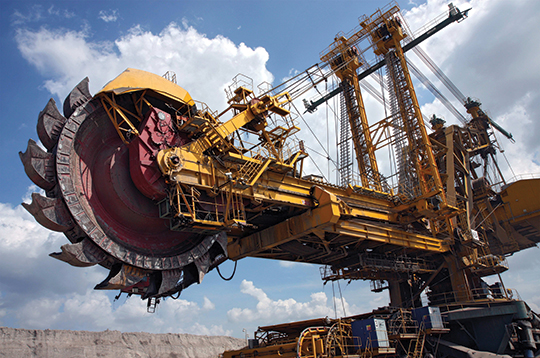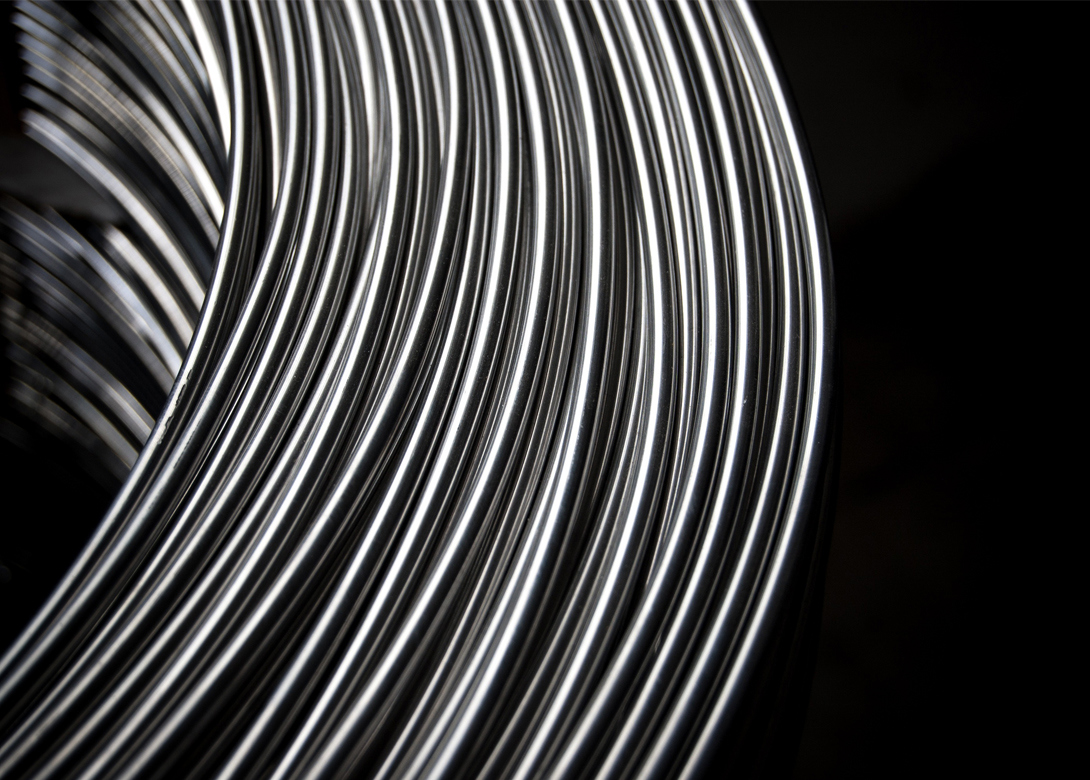Material trends 2017 – steel
24 January 2017
This special report was published in the January issue of Fastener + Fixing Magazine and the information it contains was, to the best of our ability, correct at the time of publication.
Subsequently, as expected, the cost of coking coal for steel production has fallen significantly from its pre-Christmas peak of more than US£300/tonne (Australia FOB) to around US$172/tonne. Iron ore costs, however, have held up – somewhat counter intuitively as Chinese port inventories are high and the New Year holiday is imminent. On 26 January 62% Fe Iron Ore, CFR Qingdao, edged above US$83.00/tonne. As market participants leave for the Chinese New Year holiday there is unlikely to be significant trading activity. We will review reports on both key steel raw materials mid February. Check for updates here from then.
Steel has experienced a sustained period of deflation, but as 2016 closed steel mills across the world implemented significant price increases. As the New Year dawns we take a look at some of the key trends to watch.
A blast furnace in Tangshan city, China
There are two primary methods for producing steel – the Basic Oxygen Steelmaking (BOS) and Electric Arc Furness (EAF) processes. The raw materials required for each process differ significantly as does the cost matrix for steel production. The main input for the BOS system is molten iron from a blast furnace, which primarily consumes iron ore and coking coal.
Steelonthenet1 publishes an indicative cost model for BOS, which demonstrates the significance of iron ore and coke to the eventual steel cost. Iron ore, including transport, accounts for 29% of the final steel cost. Coking coal accounts for 25%. Scrap accounts for less than 8% of the final cost. Other significant costs include capital charges (17%), electricity (5.8%), industrial gases (5.8%) and labour (5.1%). The charge entering an Electric Arc Furnace is almost entirely scrap steel so the cost matrix is very different, with Steelonthenet estimating it represents 54% of production costs. Not surprisingly electricity comes second at just over 17%. Other significant costs include the electrodes used to heat the scrap, ferroalloys, capital charges and labour.
The relative significance of the two methods varies substantially by region. In 2015 around 75% of global steel was produced using BOS, with EAF making up almost all of the remainder. In North America EAFs accounted for nearly 62% of all steel output. In contrast 84% of steel produced in Asia came from BOS, and for China that percentage is close to 94%. In the EU around 61% of steel is produced using BOS2.
Iron ore
In 2015 40% of the world’s iron ore came from Australia and a further 21% from Brazil. Russia and Ukraine each produce just short of 10% of world supply, with India producing around 7% and China 6%2. China actually produced close to half of the world’s iron ore by volume in 2015 but much of it is very low grade, making it uneconomic to refine for steelmaking. As a result, in 2015 China pulled in around 65% of all iron ore imports and nearer 80% of all seaborne iron ore.

Iron ore terminal
Four mining companies dominate global iron ore supply, accounting for 60% of global iron ore exports: BHP Billiton Ltd, Rio Tinto, and Fortescue Metals Group, all with mines in Australia, and Brazil’s Vale. As iron ore costs plunged over the last five years these companies combined scale with intensive efficiency programmes to strengthen their lead in lowest cost output.
In January 2011 a tonne of seaborne 62%Fe iron ore fines cost around US$180 at a Chinese port. By mid 2014 that figure had halved. At the beginning of 2016 the spot price was barely holding above US$40/tonne. Since mid 2016 there has been a significant, if tentative, recovery in iron ore costs, with December 2016 prices clawing above U$80/tonne despite high quayside inventories in Chinese ports. Although Vale has just opened the biggest iron ore mine in the world, the signs are the big miners will try to constrain supply in 2017 to bolster profitability. Nevertheless, the consensus amongst analysts is downbeat; with some forecasting iron ore could fall back below US$50/tonne by the third quarter.
Coking coal
After a five year downturn the increase in coking coal prices in the second half of 2016 was nothing short of spectacular. Australia is, again, the largest exporter of coking coal. By mid November 2016 the FOB price of premium hard Australian coking coal had cleared US$300/tonne, gaining 250% over April prices. The key driver was Chinese governmental action to cap domestic production of coking coal in an attempt to reduce its pernicious contribution to air pollution.
As 2017 opened spot prices slipped to around US$225/tonne and Chinese futures markets are trading at nearer US$175. Some steel mills, however, had already contracted for Quarter One supplies at above US$250/tonne.
Consensus forecasts for 2017 are for a continued decline, suggesting prices may fall below US$200/tonne by the end of Quarter One and could decline further to around US$125/tonne by the end of the year. That will still be substantially above end 2015 levels.
Short term the impact on steel production costs is evident and has been reflected in a widespread surge in steel prices. As 2016 closed US steel prices had increased by around US$100 per tonne. Japanese and Korean mills had applied similar increases. Chinese steel prices had increased by close to US$120/tonne and Taiwan’s China Steel Corporation announced increases to domestic customers equivalent to around US$76/tonne. European wire producers also warned before Christmas that increased costs from steelmakers would be reflected in the New Year.
Not forgetting the China effect In 2015 China consumed around 44%, and produced just over 50%, of the world’s steel2. China has massive overcapacity in steel and also in coal production. Beijing trumpeted its success in eliminating some 45 million tonnes of steel capacity in 2016. By the end of the year it also reckoned it would have eliminated 250 million tonnes of coal capacity. Realistically, the eliminated steel capacity was mainly unproductive: So-called zombie steel mills. That is evidenced as Chinese steel production for the ten months to October 2016 actually rose compared with the same period in 2015. It’s understandable to think of that as sleight of hand, and Beijing has certainly applied some heavy spin, but the process had inevitably to start with low hanging fruit. Much depends on how successfully China can eliminate the balance of its targeted excess capacity.
That means removal of at least another 55 million tonnes; still not enough to significantly erode the real overcapacity, but likely to make some inroads into inefficient and polluting but nevertheless productive capacity. In the state controlled sector the merger of the two giants, Baosteel and Wuhan Steel – completed at the end of 2016, will result in some capacity reduction but will also deliver efficiency improvement. Whatever its other connotations, President Xi Jinping’s strengthened personal position appears to have increased Beijing’s impetus to overcome provincial resistance to dealing with polluting and inefficient elements of both coal and steel industries. Clearly, however, Beijing will have to continue to balance the competing social – and hence security – pressures of hideous air pollution, particularly in the capital, and the unemployment effects of steel and coal closures.

Coal mining machine
In contrast to steel, much of the coal capacity eliminated was productive and the consequence reduction in supply was a major driver in the inflation of seaborne coking coal prices. China has now announced plans to eradicate inefficient coal capacity amongst small mines in the north-east, but will also increase more efficient production in western regions. In response to ‘requests’ from steel makers over rising production costs, it has now also eased 2016 restrictions on how many days a year mines may operate.
The precarious tightrope between reducing air pollution and sustaining employment contributes to the volatility of the Chinese steel market. This was evident in the first half of 2016, when wire prices in China inflated rapidly before subsiding, albeit not to historic levels. A similar, if less extreme, market surge was evident in the fourth quarter. Both were exacerbated by rampant speculation on China’s steel and materials futures markets. In both periods, Chinese authorities increased futures markets’ transactional costs to suppress speculation: As investors cashed in, the surging prices tipped over. Inveterate gamblers, however, are unlikely to be curbed and there is also a significant speculative element in downstream steel stockholders building inventory in anticipation of future demand growth.
For manufacturing consumption that may well be realistic although the Chinese New Year holiday comes early in 2017 and construction activity will also be significantly curtailed by winter weather conditions. The other significant factor is the impact of global trade defence measures to curtail Chinese dumping of steel and steel products. Chinese steel exports had been growing but plummeted for the fourth consecutive month in November 2016. Exports fell 16% in the month and year to date growth converted to a 1% decline. The outcome of the United States presidential election will almost certainly reinforce US appetite for severe protective measures. The EU is gradually but seemingly inexorably toughening its stance on steel imports from China. On one hand that will bolster upward price movement in these regions; on the other it will place more emphasis on Chinese domestic demand growth to consume the hard to tame output of the world’s largest steelmaker and coal miner.
In the round, stronger economic prospects for China and the global economy, and the supply side cost impetus from coking coal and iron ore costs hint that steel prices may hold up but the pattern is likely to be erratic. 2017 could very easily be another roller coaster year for fastener raw materials.



